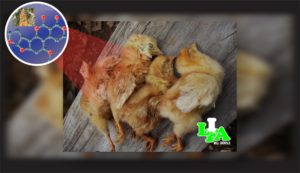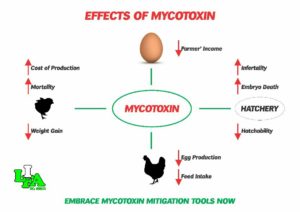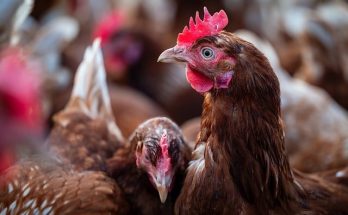Farmers in the poultry industry also attest to low egg production, reduced live weight and increased mortality when birds are fed with aflatoxin-contaminated feed.
Fungi are ubiquitous plant pathogens that are major spoilage agents of foods and feedstuffs. Infection of plants by various fungi does not only result in reduction of crop yield and quality with significant economic losses but also contamination of grains with poisonous fungal secondary metabolites called mycotoxins. The ingestion of such mycotoxin contaminated grains by animals and human beings has enormous public health significance; this is because the toxins produced are capable of causing diseases in man and animals (Bhat and Vasanthi 2003).
The poisons produced by aflatoxins are not only dangerous for people, but also for animals, including pet and livestock. People and animals get aflatoxin from food and feed respectively, prepared from contaminated crop produce even in low concentrations.
Africa and the tropical world are at a distinct disadvantage: although aflatoxin-producing fungi (or moulds) are widespread in nature, they are more common in the humid and semi-arid tropics where they affect crops and contaminate the grains or kernels with their deadly toxins. Maize, groundnuts, sorghum, chili peppers and other crops are prone to mould infections and aflatoxin contamination in the field, and after harvest until the crops are consumed.


Farmers in the poultry industry also attest to low egg production, reduced live weight and increased mortality when birds are fed with aflatoxin-contaminated feed. High temperatures and end-of-season drought favour mould infection and aflatoxin formation. As do inadequate drying and poor crop storage and transportation.
Detecting aflatoxin is very important but unfortunately, they are not visible to the naked eyes in feed, food and crop. Chronic consumption of aflatoxins by people and animals results in visible ill effects on health. Evidence on these health effects due to low but chronic consumption has been widely studied and documented in Ghana.
Methods of detecting aflatoxicosis in feeds and food have been developed, many of which molecular techniques are employed using rapid kits and ELISA. These methods seem expensive and not advisable economically for small scale farmers.
How then do we economically control aflatoxin? Are there natural and environmentally safe products for crop farmers? Read more of these effects and solutions in a report of combating deadly aflatoxin in Ghana’s food.

Livestock industry Foundation is an NGO that provides farmers with information on mycotoxin challenges and mitigation strategies. This is one of our ways to improve the livestock industry and help reduce farmer’s vulnerability to poverty and hunger.
We are available for collaboration in areas that require research, education, training and advocacy.





Also I believe that mesothelioma is a extraordinary form of many forms of cancer that is often found in all those previously exposed to asbestos. Cancerous tissues form inside the mesothelium, which is a safety lining which covers most of the body’s organs. These cells commonly form inside the lining of your lungs, tummy, or the sac which encircles one’s heart. Thanks for revealing your ideas.
Thank you for your valuable contributions
Aflatoxin is a high risk metabolite that we need to heavily mitigate from our livestock feed stuff